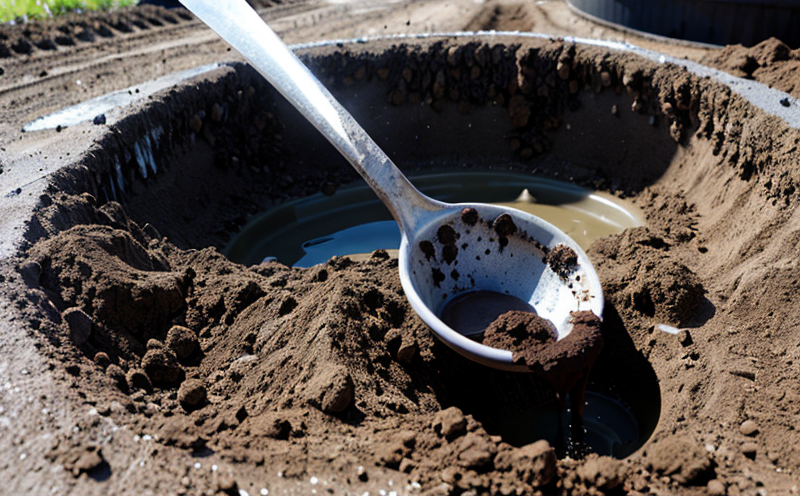EPA 160.3 Total Dissolved Solids in Biosolids Test
The EPA 160.3 method is a standardized procedure designed to determine the total dissolved solids (TDS) content of biosolids, which are the organic and inorganic materials that remain after water has been removed from sewage sludge or other waste products through treatment processes. This test is crucial for ensuring compliance with environmental regulations and for understanding the composition of biosolids, particularly for those involved in wastewater management, recycling, and agricultural applications.
Total Dissolved Solids (TDS) are defined as all inorganic and organic substances that remain after filtration through a 0.45 μm membrane filter. The measurement provides insight into the concentration of various compounds present within biosolids, which can vary significantly depending on the source material, treatment process, and intended end-use.
The EPA 160.3 method involves several steps to ensure accurate results:
- Sample Collection: Samples are typically collected from a representative point in the biosolids stream or storage facility.
- Preliminary Drying: The sample is dried at 105°C ± 2°C until constant weight, which ensures that any moisture content has been removed. This step is critical to obtaining accurate TDS measurements.
- Weighing: The dried biosolids are weighed in a precision balance before and after drying to calculate the loss on ignition (LOI), which helps in determining the percentage of volatile matter present.
- Burnout Test: After drying, the sample is subjected to a burnout test where it is heated at 500°C ± 25°C. This step removes all organic materials, leaving only inorganic compounds behind.
- Weighing Again: The sample is weighed again after the burnout process to determine the remaining solid content, which corresponds to the total dissolved solids.
The final TDS value is calculated based on these measurements and represents a key parameter for understanding biosolid composition. This information is vital for various stakeholders including quality managers who need to ensure that biosolids meet specified standards, compliance officers responsible for regulatory adherence, R&D engineers looking to optimize treatment processes, and procurement personnel seeking reliable suppliers.
Understanding the TDS content of biosolids also aids in assessing their suitability for different applications. For instance, higher TDS levels may indicate a greater concentration of salts or minerals which could affect agricultural productivity if used as fertilizer. Conversely, lower TDS might suggest more purified material suitable for recycling into construction products.
Applied Standards
The EPA 160.3 method is aligned with several international standards aimed at ensuring consistent and accurate testing across different jurisdictions:
- ASTM D4959-18: This American Society for Testing Materials standard provides guidelines on the determination of total dissolved solids in water using gravimetric methods.
- EN ISO 7862:2013: This European Norm specifies procedures for determining suspended matter and total solids by filtration and drying.
- IEC 62359-4: Part of the International Electrotechnical Commission’s series on environmental test conditions, this standard offers recommendations for measuring TDS in various liquid samples.
By adhering to these standards, laboratories can ensure their testing procedures are robust and consistent with industry best practices. Compliance with such norms not only enhances reliability but also facilitates better communication among professionals working within the sector.
The EPA 160.3 method is particularly important for organizations handling biosolids as part of their wastewater treatment processes or those involved in agricultural fertilization programs. It ensures that all parties involved—be they researchers, regulators, or practitioners—are using a common reference point when discussing TDS content.
Competitive Advantage and Market Impact
The ability to accurately measure total dissolved solids (TDS) in biosolids provides significant competitive advantages for businesses operating within the water & wastewater testing sector. Accurate TDS measurements enable companies to:
- Enhance Product Quality: By ensuring consistent and compliant levels of TDS, firms can offer higher quality products that meet regulatory requirements and customer expectations.
- Increase Efficiency in Treatment Processes: Understanding the exact composition of biosolids allows for more efficient processing techniques, reducing costs associated with waste management and recycling operations.
- Expand Market Opportunities: With precise data on TDS content, businesses can explore new markets such as agricultural applications or industrial uses where specific material properties are required.
- Promote Sustainability Initiatives: Accurate TDS measurements contribute to sustainable practices by helping companies minimize waste and maximize resource recovery from biosolids.
In today’s increasingly stringent environmental regulations, having reliable tools like EPA 160.3 enables businesses to stay ahead of competitors by maintaining a strong reputation for quality and compliance. Additionally, the ability to accurately measure TDS opens up opportunities for innovation in developing new products or improving existing ones.
Use Cases and Application Examples
| Application Case | Description |
|---|---|
| Agricultural Fertilizers | Biosolids with optimal TDS levels can be used as high-quality fertilizers, enhancing soil fertility and crop yields. |
| Recycling Industries | Biosolids from wastewater treatment plants are often recycled into construction materials or other industrial products. Accurate TDS measurements ensure product consistency and quality. |
| Aquaculture | TDS content impacts water salinity, influencing fish health and growth rates in aquaculture operations. Monitoring TDS through EPA 160.3 helps maintain ideal conditions for aquatic life. |
| Environmental Research | Scientists studying the environmental impact of biosolids can use TDS data to assess long-term effects on ecosystems and develop mitigation strategies. |
| Regulatory Compliance | Biosolid producers must comply with strict EPA guidelines regarding TDS content. Regular testing ensures ongoing adherence to these regulations. |
| Water Treatment Plants | TDS measurements are critical for monitoring the efficiency of water treatment processes and ensuring treated wastewater meets discharge limits. |
The ability to accurately measure total dissolved solids in biosolids offers numerous benefits across various industries. From enhancing agricultural productivity to improving industrial recycling practices, accurate TDS data plays a vital role in achieving sustainable outcomes and regulatory compliance.





